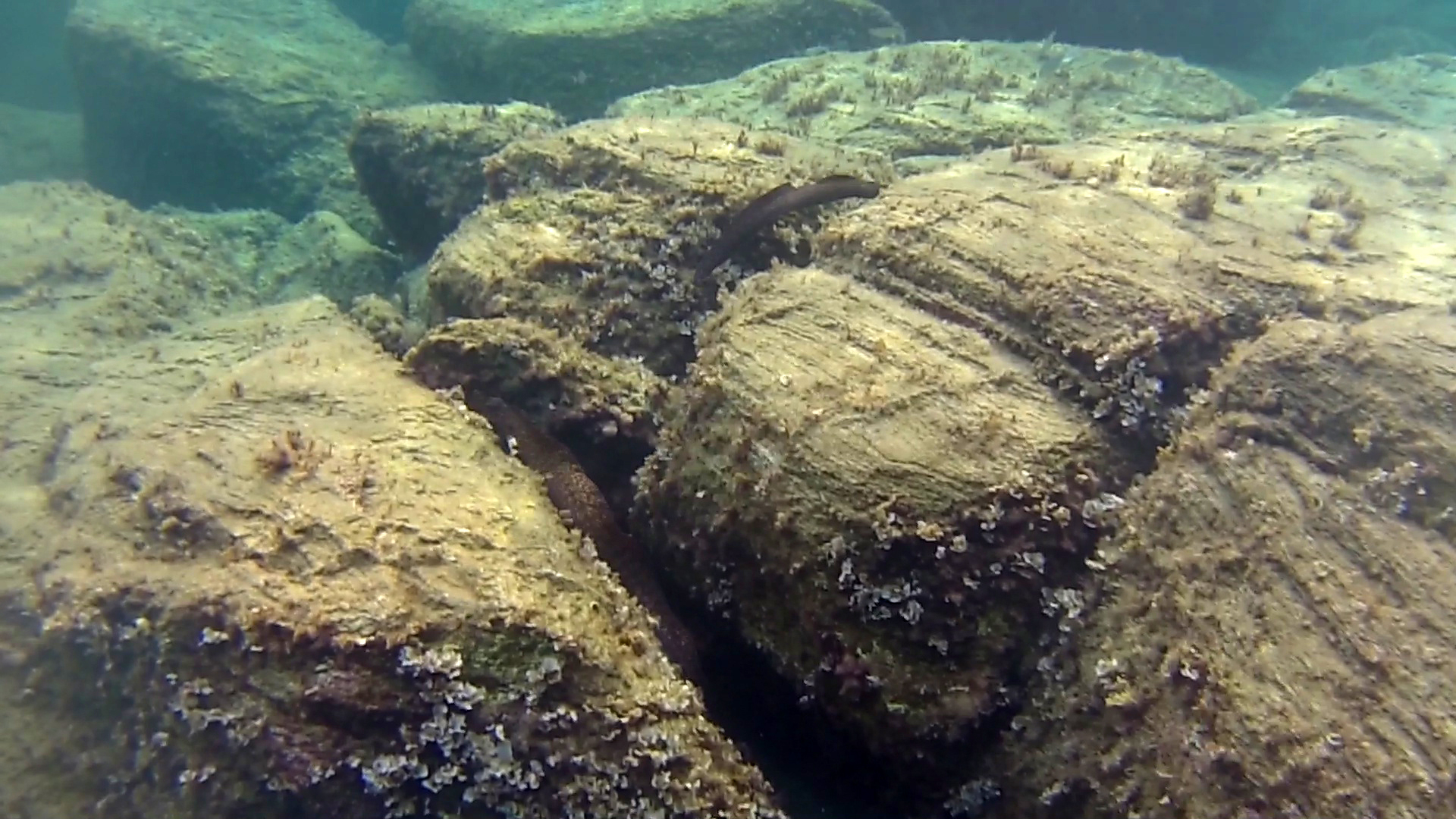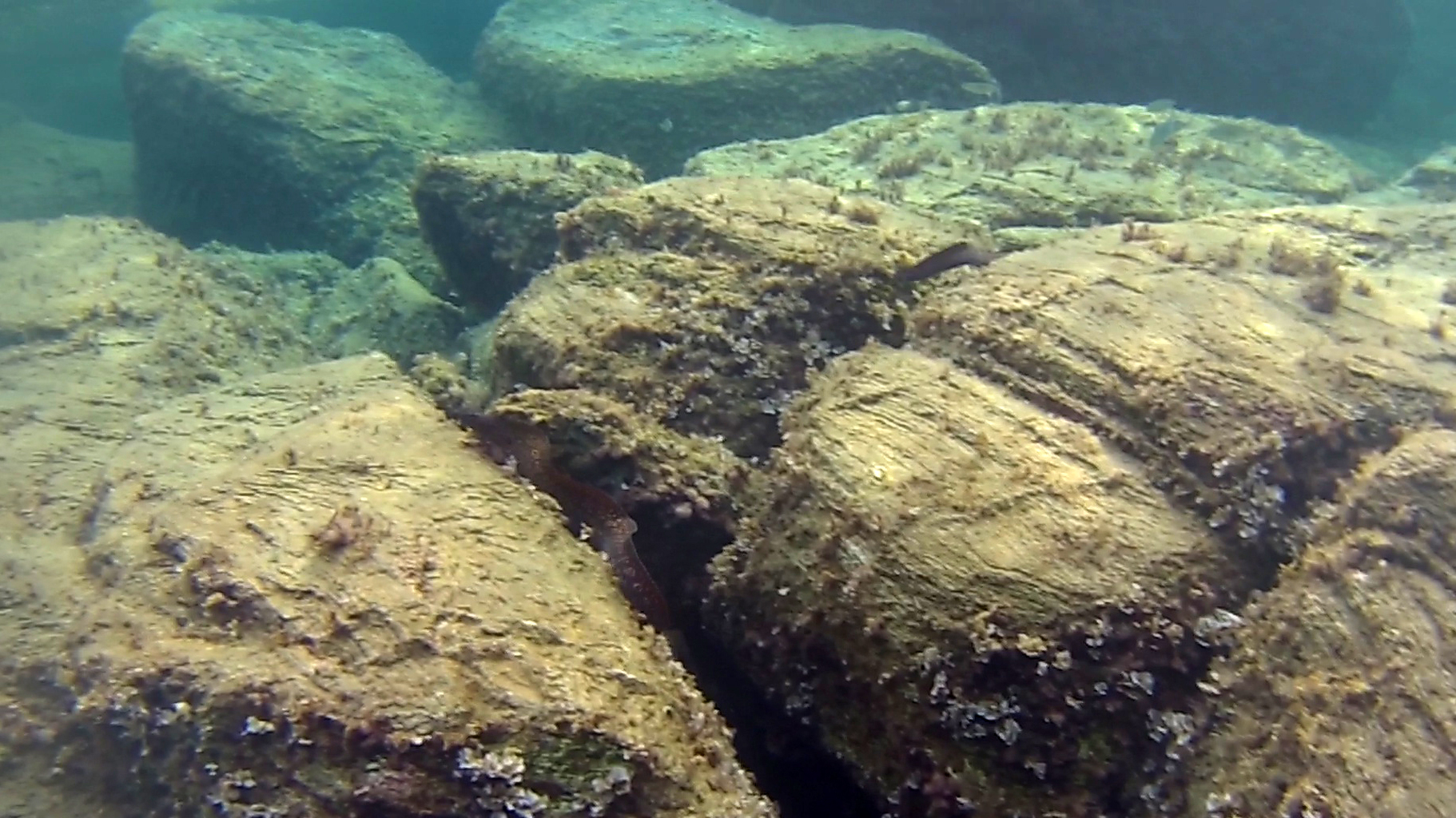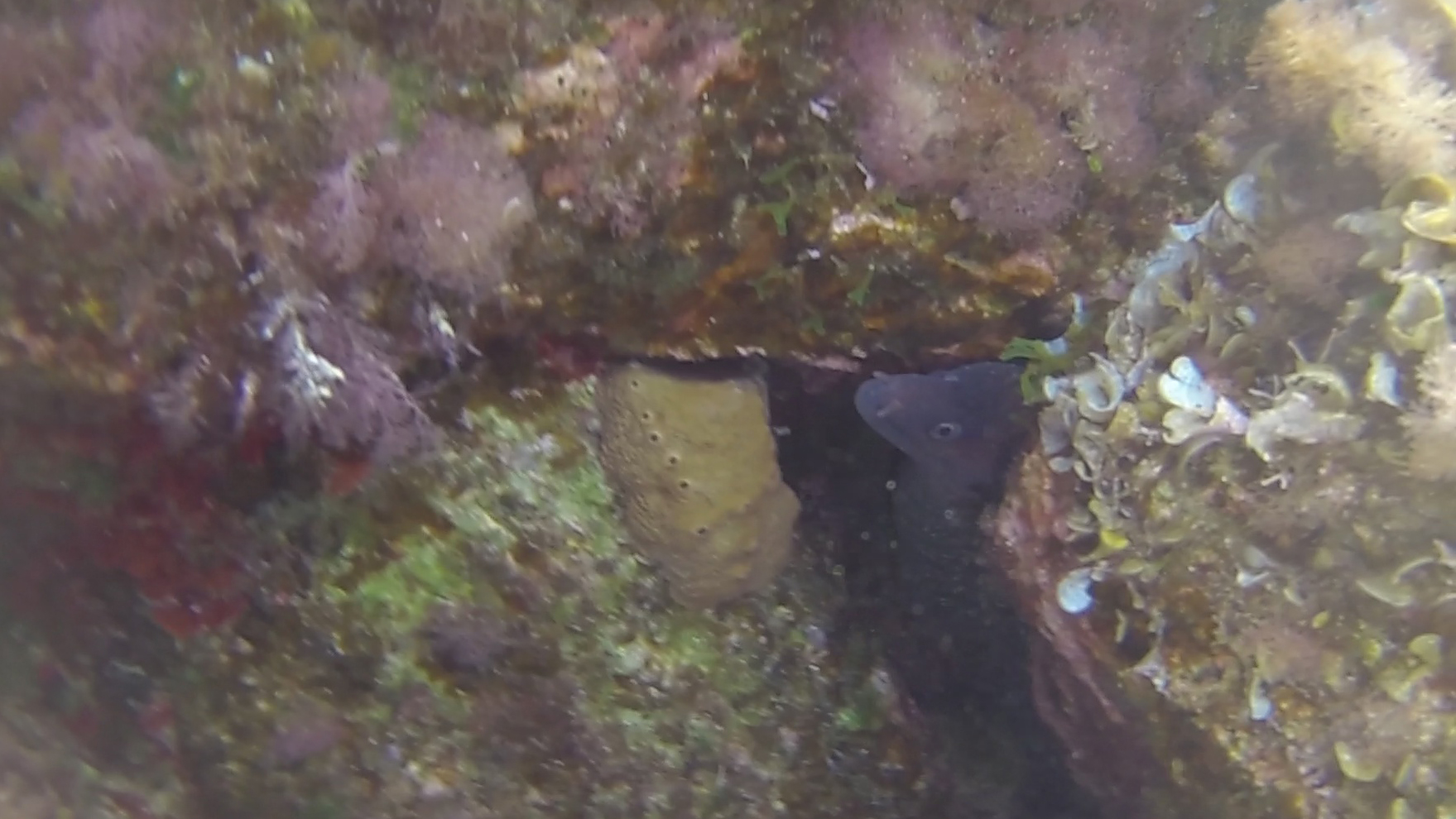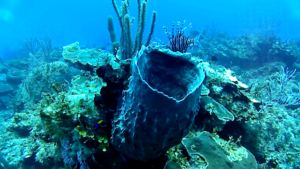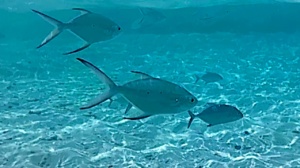We are at Elba Island near to Paolina’s Rock ( Scoglio della Paolina) where, while snorkeling at sunset, we have filmed a very fast quarrel between two morays. Quarrel between morays Litigio tra due murene intotheblue.it
Mediterranean Moray (Murena Helena) is a strongly territorial species, usually coming out at night to hunt all night, temporarily abandoning its lair to look for food. Often, however, it can happen that hunting comes into the territory of a competitor and the battle is almost obvious.
In the video, we see how the speed was very fast, we had to slow it down four times in order to be able to see something in more detail. Probably the dispute is due to the invasion of the smallest specimen in the territory of the largest moray that has not hesitated to drive away the rival, who has moved away without excessive damage.
The Mediterranean moray (sometimes also called Roman eel, Muraena helena) is a fish of the moray eel family. It has a long eel-like body and is found in the eastern Atlantic Ocean and Mediterranean Sea. Its bite can be dangerous to humans. Quarrel between morays Litigio tra due murene intotheblue.it
Distribution and habitat It is widespread in the Mediterranean Sea and in the eastern Atlantic (from the south of England to Senegal, including the coastal areas of the Azores, Madeira, the Canary Islands, and Cape Verde). It is common in the Mediterranean and in Italian seas except in the northern Adriatic Sea. Populates reefs or coral without sedimentation and rich in ravines at depths of 5 to 50 meters. Juvenile individuals are often found in very shallow waters.
Description Like all anguilliformes the moray eel has a serpentine body and dorsal, caudal and anal fins joined in a continuous median fin. The body is rather massive and relatively compressed at the sides along its entire length, the body section is oval and not round like in the eel, for example. The eyes are quite small; the mouth is very wide and armed with long and pointed teeth turned backwards. The posterior nostril has a tubule and is located in front of the eye. The gill opening is small, roundish, located just behind the head. The dorsal fin begins immediately behind the eyes; the anal fin has its origin slightly behind the half of the body. In this species the ventral fins are absent (as in all the anguilliformi) and the pectoral fins. The language is also missing. The skin is slimy and free of visible scales. The background color is dark brown or almost black completely sprinkled with yellowish spots of extremely variable shape, number and size. The maximum size is 150 cm, the most common measure is about 80 cm.
Biology It is a nocturnal and territorial fish that spends the hours of light hidden in his cave.
Hazard for humans The moray can attack even without being provoked due to its territoriality. It is particularly risky for certain divers to offer food to the morays with their hands. The bite of the moray eel is very painful but it is not certain if toxins are present in the saliva. Toxins capable of causing hemolysis are certainly present in the blood of the moray and numerous other anguilliformes such as eel and conger. These toxins, of protein nature, are active only if introduced into the blood circulation of the man while they are harmless by ingestion. However, they are inactivated by cooking. On this disquieting animal, some sinister and completely unreal legends are circulating, such as, for example, that in ancient Rome, where the morays were among the most appreciated fish, the nurseries of these fish were fed with human flesh.
 English
English Italiano
Italiano
